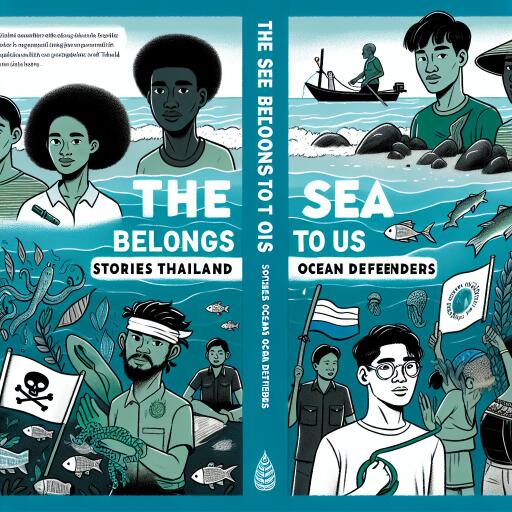
The Sea Belongs to Us: Stories from Thailand’s Ocean Defenders
Thailand’s marine ecosystems, vital for local livelihoods and biodiversity, face unprecedented threats from the accelerating climate crisis, destructive fishing practices, and expansive industrial projects. Despite government inaction, local communities are taking a stand to protect their maritime homes and way of life.
Voice from the Heart of Phato: Somchok Jungjatruran’s Stand
Somchok Jungjatruran, better known as Chok, is deeply rooted in the verdant lands of Phato, a region not directly on the coast yet profoundly interconnected with the surrounding seas through rivers and forests. Chok is sternly opposed to a landbridge and industrial estate proposed for the area, fearing it would compromise its ecological integrity. Phato’s unique geographical and ecological features make it an agricultural paradise, particularly for high-value crops like durian. Chok, leading the Phato Conservation Network, aims to safeguard this ecological treasure for future generations, challenging government encroachment on public natural resources.
Khairiyah Rahmanyah: A Fisherwoman’s Daughter Fighting Industrialization
At just 18 years old, Khairiyah Rahmanyah, or Yah, emerged as a national figure from Chana, Songkhla. Her fervent campaign against the Chana Industrial Estate highlighted the potential transformation of her bountiful coastal community into an industrial zone. With her community, Yah has stood firm for four years, advocating for a more participatory and transparent assessment of the industrial estate’s environmental impact. Yah’s story reflects a broader struggle for future generations to inherit a pristine environment.
The Guardians of Rajakrud and the Landbridge Project
In Rajakrud, Ranong, communities voice their unease over projects threatening their marine resources and livelihoods, particularly small fishing villages like Ao Ang. Tom Sinsuwan, a resident of Moo 7, Ban Huai Pling, shares her community’s fears and aspirations. Despite facing identification and rights issues, they aspire to protect their marine-rich home for future generations. Tom dreams of transforming their home into a World Heritage site, ensuring sustainable livelihoods through tourism rather than industrial development.
The Moken of Koh Phayam: An Indigenous Perspective
Koh Phayam, known for its idyllic tourist appeal, is also home to the Moken, an indigenous group led by community leader Somchok Taleluk, known as Au. The Moken’s traditional lifestyle is intricately linked to the sea, yet they face marginalization and lack of recognition. Au’s story underscores the challenges in preserving indigenous rights and access to resources amidst development pressures. The community’s struggle for identity and the ongoing environmental changes cast uncertainty on their future.
The narratives of Thailand’s Ocean Defenders illuminate a stark disconnection between government policies and the well-being of coastal communities. As the climate crisis worsens, these communities, often excluded from policy discussions, find themselves at the forefront of battles for environmental justice. Their deep connection to the sea, combined with a rich local knowledge, positions them as crucial stewards of Thailand’s marine ecosystems.
The tale of the Greenpeace ship Rainbow Warrior’s journey around Thailand is not just about raising awareness but igniting a dialogue on community rights and participative management of marine resources. Through these efforts, there’s hope for a future where conservation and sustainable use of marine resources go hand in hand, ensuring that the sea truly belongs to the people.





Leave a Reply